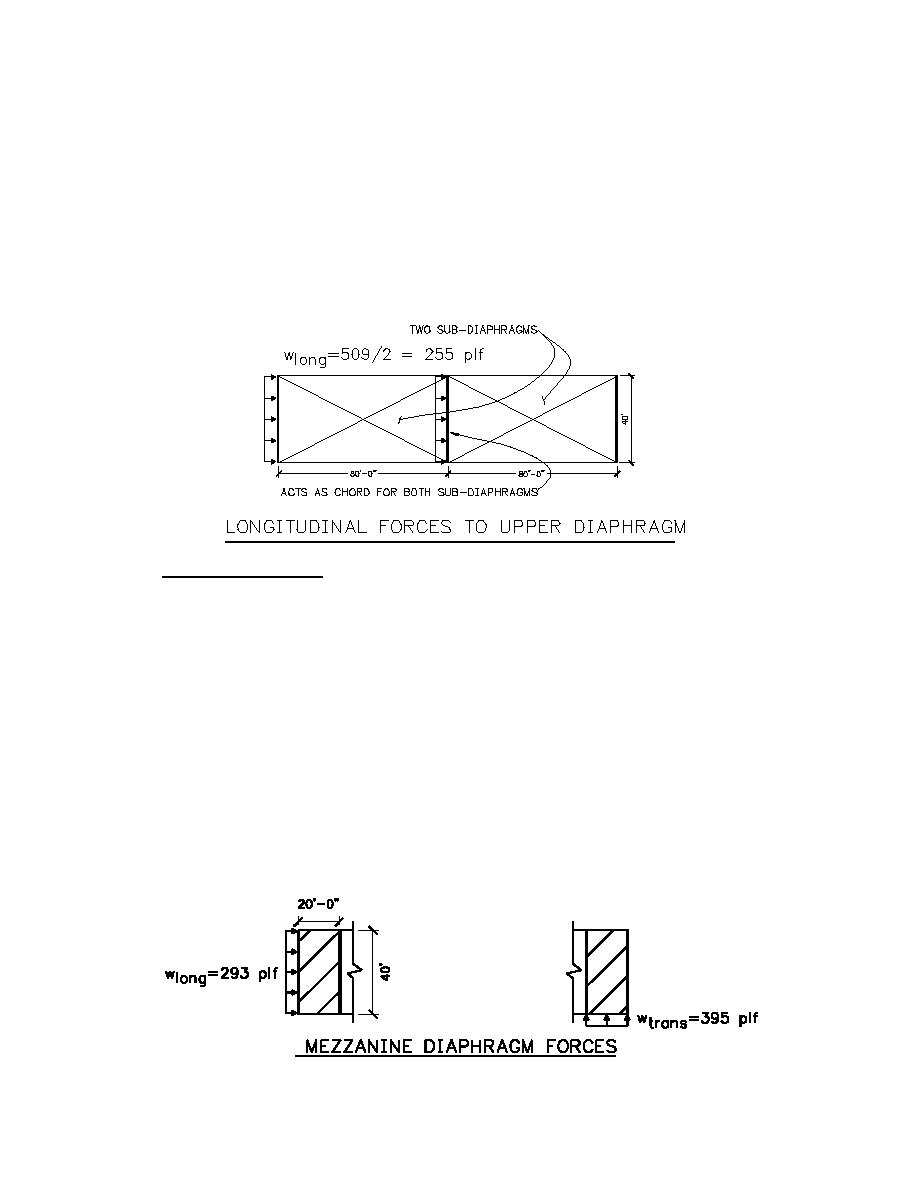
Longitudinal direction:
The steel in the bond beams (2- #5) resists seismic chord forces in the longitudinal direction. The
diaphragm is assumed to act as two subdiaphragms spanning between the longitudinal collectors
on the edges and the CMU walls (see diagram on next sheet). The steel in the firewall bond beam
must resist the chord forces from both subdiaphragms. The chord forces at the interior wall would
tend to cancel each other out, but assume they are additive to be conservative.
w = 509 plf (use 255 plf for each subdiaphragm), span = 40 ft., depth = 80 ft.
M = wL2/8 = (255)(40' 2/8 = 51.0 kipft. (69.2 KNm)
)
T = M/d = (51.0 kipft) / 80 ft. = 0.64 kips (2.85KN)
Chord force to interior CMU wall bond beam = 2(0.64) = 1.28 kips (5.69 KN)
Chord Forces: Mezzanines
Transverse direction
The diaphragm is assumed to act as a simply supported beam between the exterior and interior
CMU shear walls. The mezzanine chord members for transverse seismic forces are the edge
beams at the edge of the mezzanine.
w = 395 plf, span = 20 ft., depth = 40 ft.
M = wL2/8 = (395)(20' 2/8 = 19.7 kipft. (26.7 KNm)
)
T = M/d = (19.7 kipft) / 40 ft. = 0.49 kips (2.18 KN)
Longitudinal direction
The steel in the bond beams of the exterior and interior mezzanine shear walls (2- #5) resists chord
forces for seismic loading in the longitudinal direction.
w = 297 plf, span = 40 ft., depth = 20 ft.
M = wL2/8 = (297)(40' 2/8 = 59.4 kipft.
)
T = M/d = (59.4 kipft) / 20 ft. = 2.97 kips
1 foot = 0.305m
1 plf = 14.59 N/m
H1-27


 Previous Page
Previous Page
